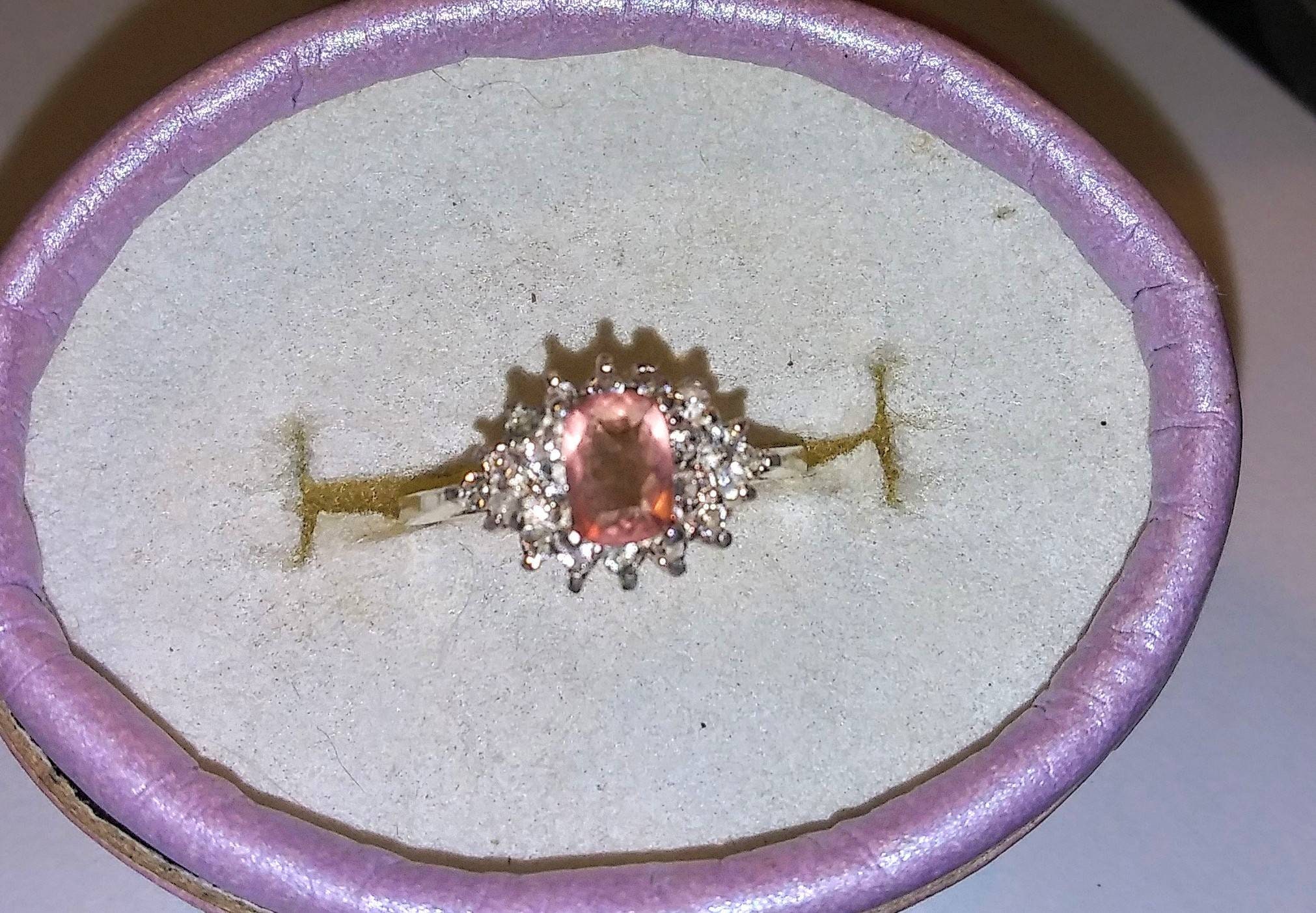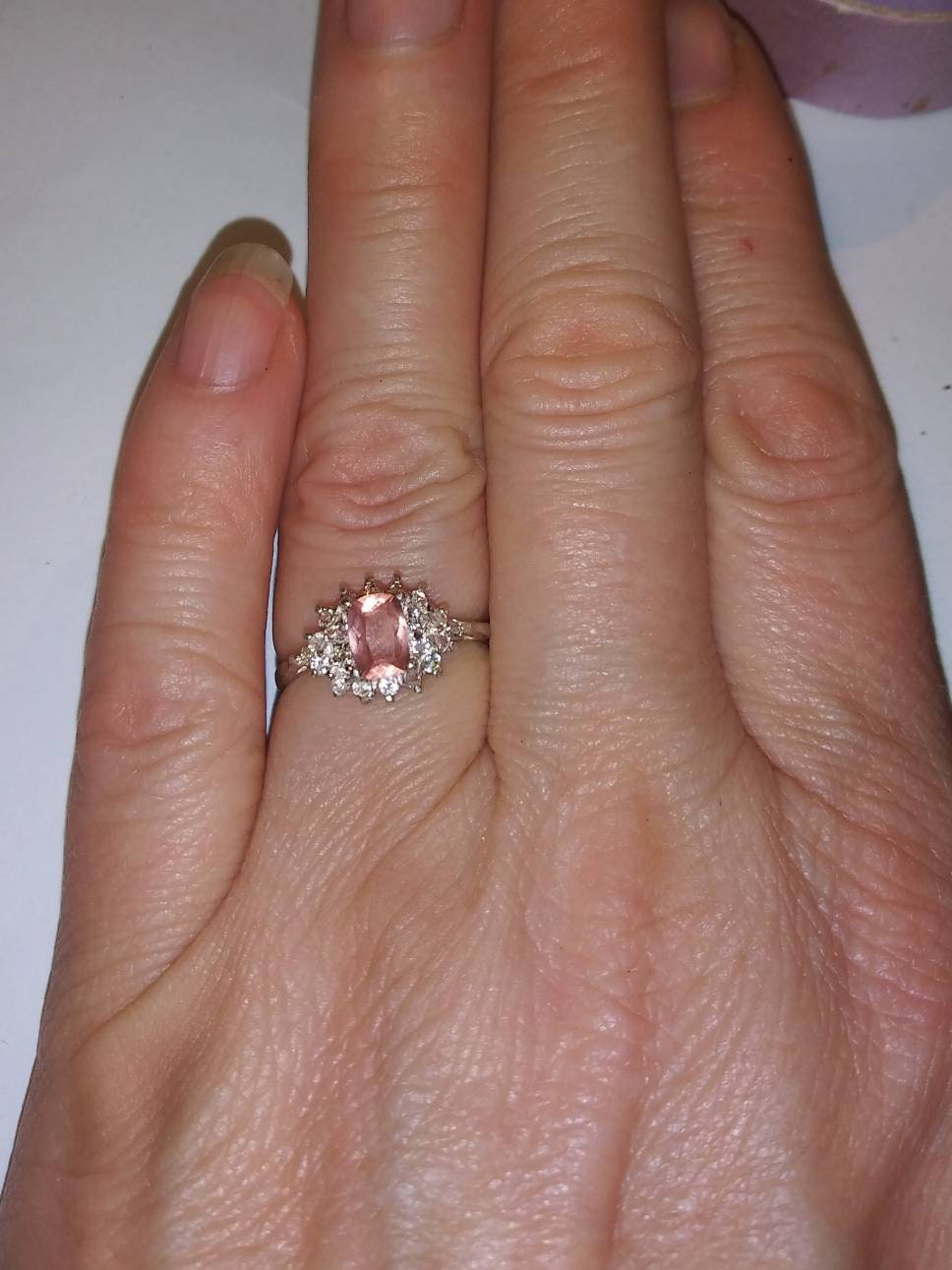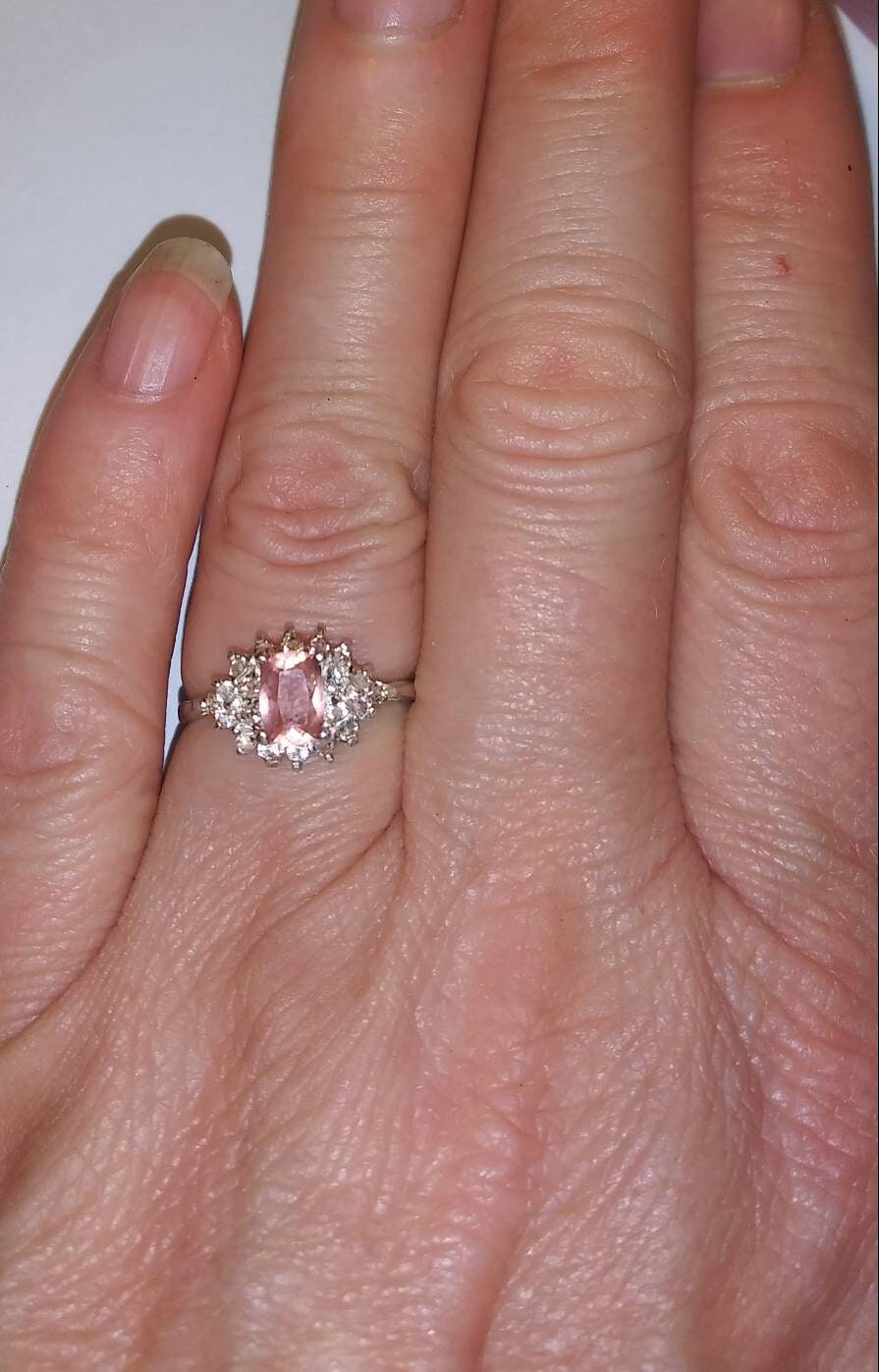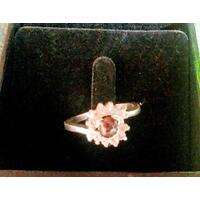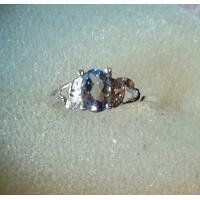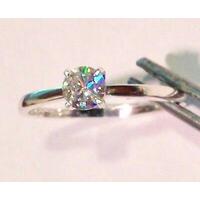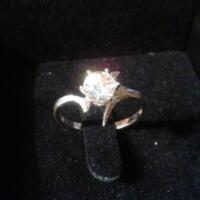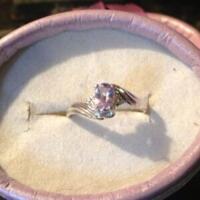About this Product
Beautiful very rare Red-Pink Apatite(.56ct, VVS, Brazil) hand set and accented with natural white Zircon(.30ctw,VS,Cambodia) all in solid 259 sterling silver.
The name ('apatit') was invented by A.G. Werner probably sometime in the mid-1780s, which he later described as being named from the Greek verb aπasάω (strictly ἀπasάω; transliterated as apatáō) as the derivation, which means ‘to deceive’ (someone) or ‘to be deceptive’, because, as he wrote, "until now it has misled all mineralogists in its identification.
About Apatite - History and Introduction
Apatite is a very common mineral, but transparent gemstone-quality apatite is extremely rare. Despite the fact that apatite is the defining mineral for 5 on Mohs scale of hardness, the gemstone remains virtually unknown to most, and is seldom found in jewelry stores. However, because apatite occurs in such a wide variety of attractive colors and forms, it is a favorite among gemstone collectors. The name 'apatite' was derived from a Greek word meaning 'cheat'. It was given its name because of its close resemblance to several other gemstones that are often more valuable. As a result, apatite became unfairly labeled as the 'deceitful stone'.
Apatite that exhibits chatoyancy, or a cat's eye effect, is rare and highly sought-after. Cat's eyes are cut en cabochon to bring out their desirable qualities. Chatoyancy is a rare optical phenomenon existing only in a handful of different gem types. It is distinguished by a unique light reflection that resembles the slit eye of a cat. The effect is caused by light reflection from parallel inclusions within a stone, typically rutile needles, fibers or channels. Cat's eye reflections are best viewed in strong and direct light; when the stone is rotated, the cat's eye will appear to glide across the surface.
Identifying Apatite
Apatite is a group of phosphate minerals which includes hydroxyl-apatite, fluor-apatite and chlor-apatite. Apatite is the most common type of phosphate in the world and it is the main source for phosphorus, a chemical essential to bioenergetics and photosynthesis. Apatite is composed of calcium phosphate, which is the same material that makes up teeth and bones. Apatite can be identified through several testing methods. Fluorescence is one way to distinguish apatite specimens. Apatite is much harder than calcite, and because it is softer than tourmaline, precious beryl and quartz, a simple scratch test can usually identify and distinguish apatite. Amblygonite, andalusite, brazilianite, sphene and topaz can be easily confused with apatite too.
Apatite Mineralogy
Apatite develops as crystals within granite pegmatites, metamorphic rocks and igneous environments. Apatite crystal can vary in composition based on the level of hydroxide, fluorine or chlorine ions. Apatite-rich rocks are one of the most important sources for phosphorus. Not only is phosphorus required by plants, but it is also an essential chemical commonly used in fertilizers, explosives, fireworks, pesticides, toothpaste, detergents and pharmaceutical products.
Apatite Origin and Gemstone Sources
Apatite is found in a number of places in the world, including Myanmar (Burma), India, Kenya, Brazil, Norway, Sri Lanka, South Africa, Mexico, Canada and the United States. Madagascar is known to produce a neon blue-green material that is highly desirable. A rare variety is a rich purple apatite from Maine.
This item can be made with other natural gemstones. Convo for availability, & pricing.
This item can be precious metals wrapped. Charges apply.
Size 6.5, can be resized up to 8
Please be aware, Mexican red apatite is glass.
_1715468939535_jpeg_119668628663_1715468940.jpeg?t=1722481380)
